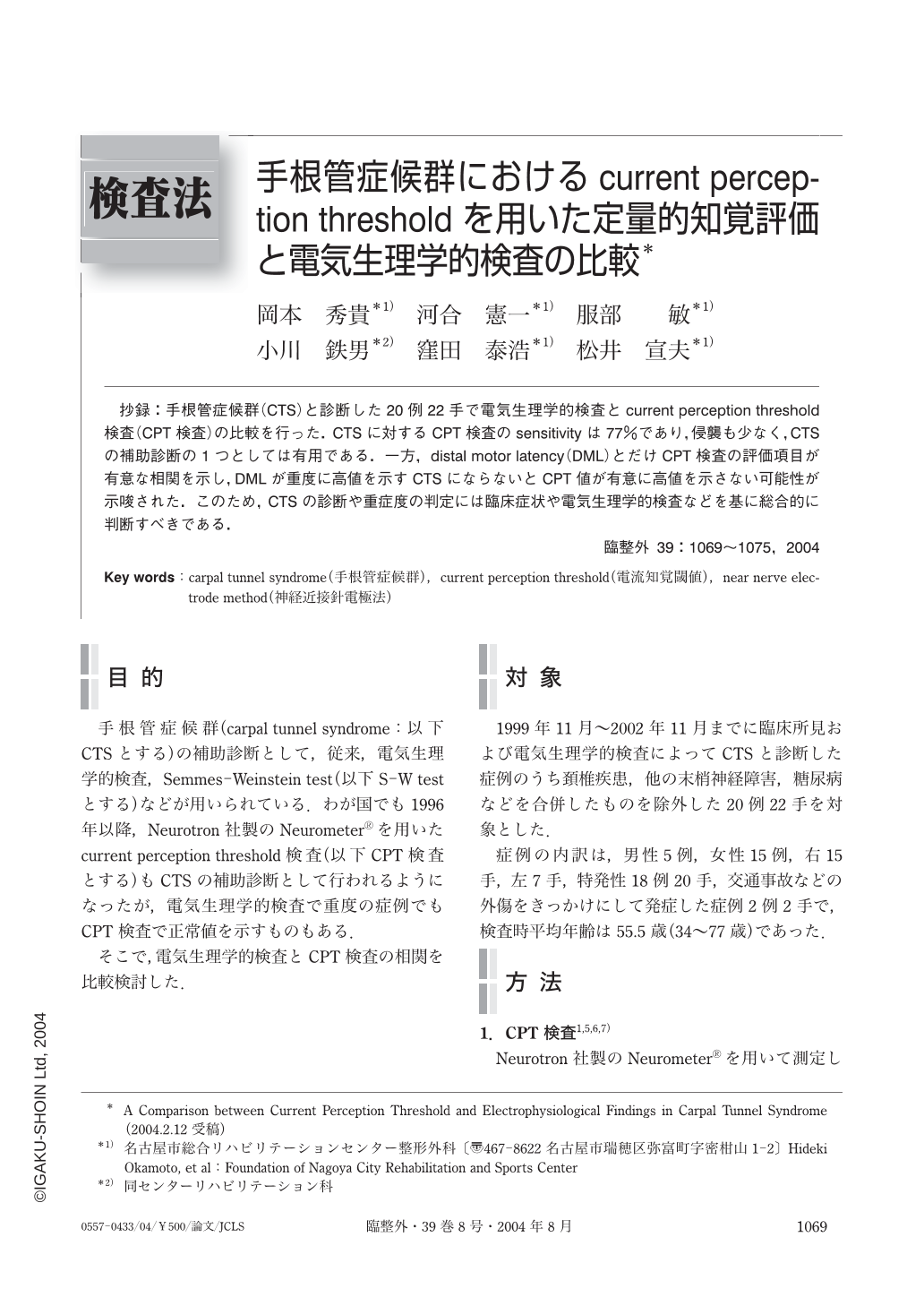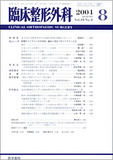Japanese
English
- 有料閲覧
- Abstract 文献概要
- 1ページ目 Look Inside
抄録:手根管症候群(CTS)と診断した20例22手で電気生理学的検査とcurrent perception threshold検査(CPT検査)の比較を行った.CTSに対するCPT検査のsensitivityは77%であり,侵襲も少なく,CTSの補助診断の1つとしては有用である.一方,distal motor latency(DML)とだけCPT検査の評価項目が有意な相関を示し,DMLが重度に高値を示すCTSにならないとCPT値が有意に高値を示さない可能性が示唆された.このため,CTSの診断や重症度の判定には臨床症状や電気生理学的検査などを基に総合的に判断すべきである.
Twenty-two hands of 20 patients were diagnosed as carpal tunnel syndrome (CTS). Cervical spine disease, other peripheral neuropathy and diabetes mellitus had been ruled out as causes of the patient's symptoms. There were five men and 15 women. The right side was affected in 15 and the left side in 7 cases. Mean patient age was 55.5 years (range:34 to 77 years). Near-nerve electrode method according to Buchthal and current perception threshold (CPT) examinations were performed routinely, and we compared the CPT and electrophysiological findings.
There was a good correlation between distal motor latency (DML) and CPT score at 250Hz in the thumb and at 2,000Hz in the middle finger. In brief, CPT score tended to be within the normal range until DML became prolonged.
CPT detected abnormalities in 77%of the patients. Near-nerve electrode method detected abnormalities in 100%of the patients. We conclude that CPT is helpful for the screening method for CTS. Electrophysiological examinations (near-nerve electrode method) provide good information on the degree of CTS.

Copyright © 2004, Igaku-Shoin Ltd. All rights reserved.


